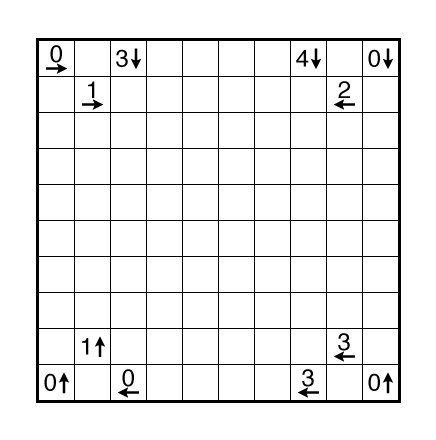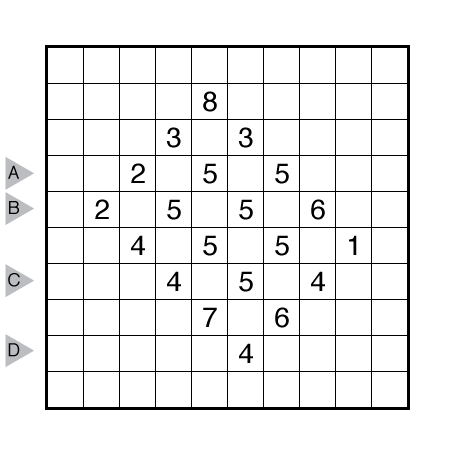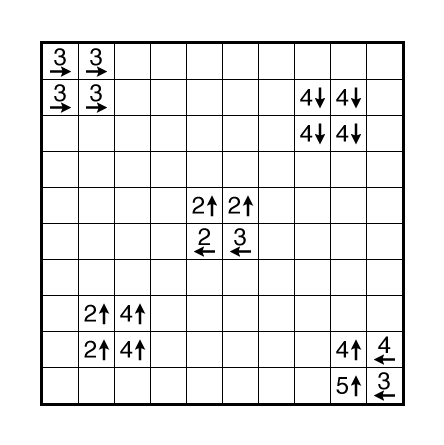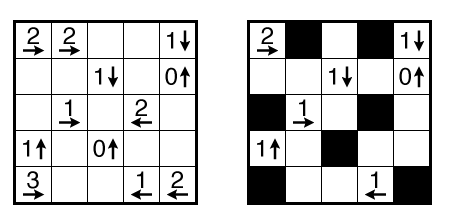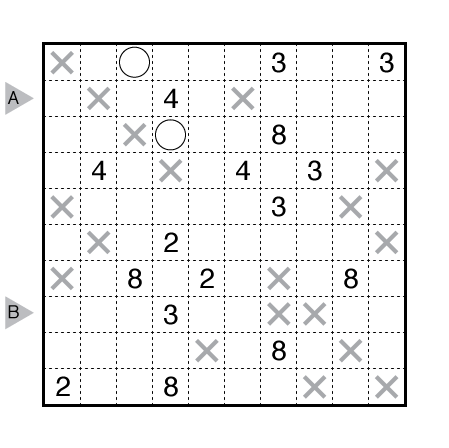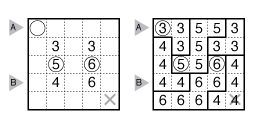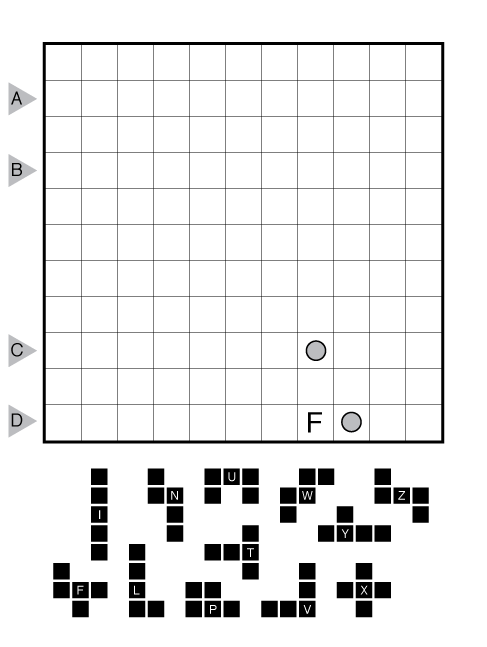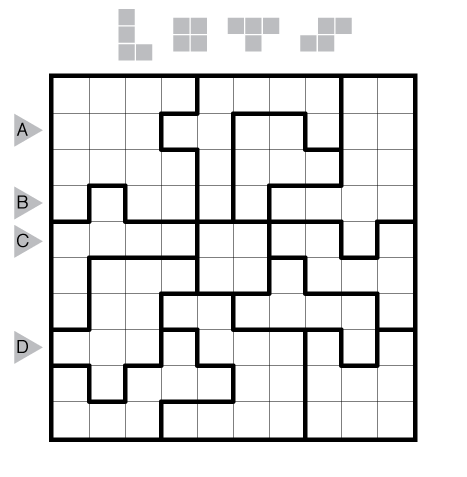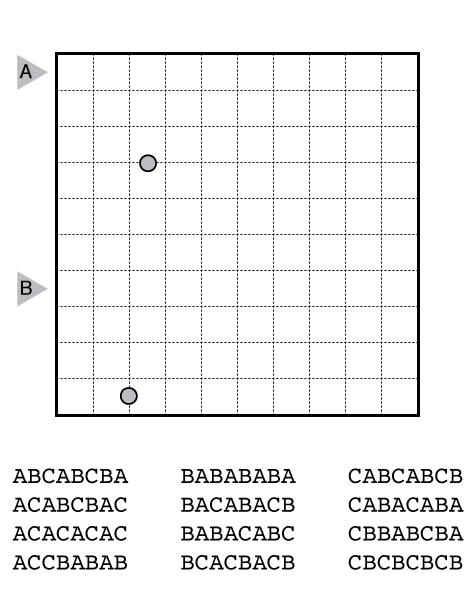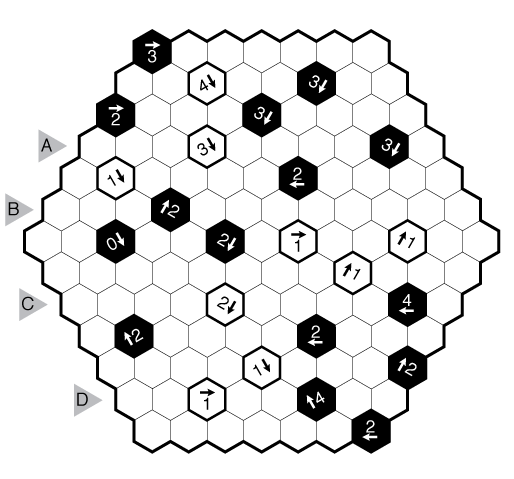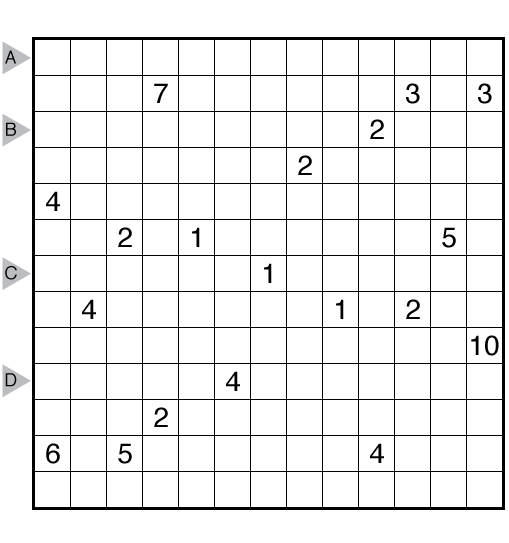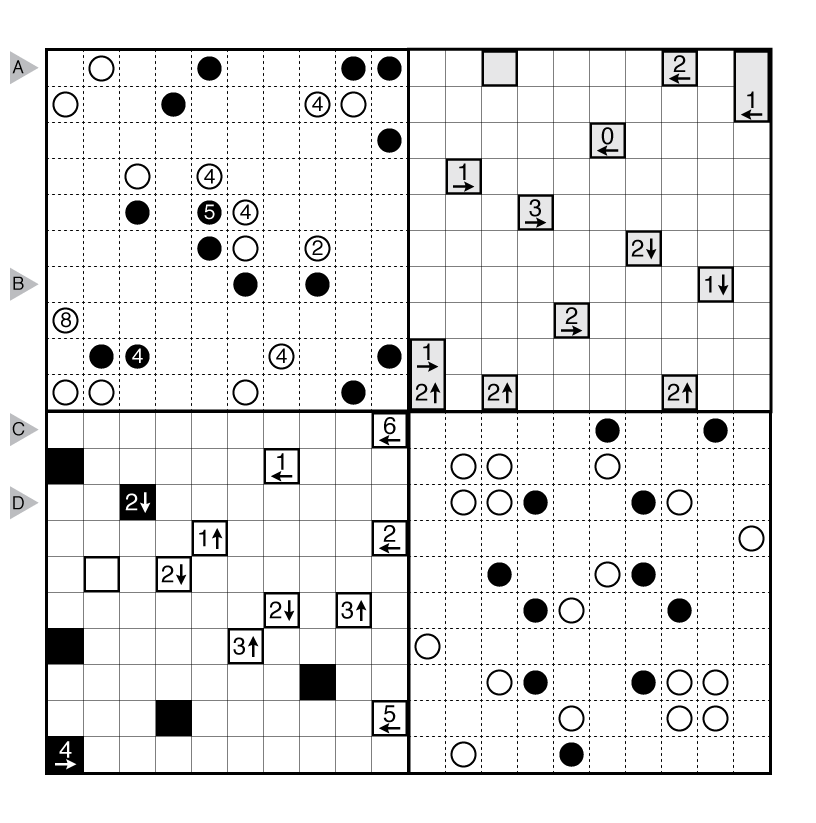
(View image directly for larger form.)
PDF
or solve online (using our beta test of Penpa-Edit tools in yajilin mode where left click shades squares, left click+drag draws lines and right click marks X’s; note that the default puzzle info is too long — even for an url shortener — so copy and paste all the text in this file into the “Load” option in the upper-right of the penpa-edit interface to access.)
Theme: Clue Symmetry and Logic (for TheSubro)
Author/Opus: This is the 158th puzzle from our contributing puzzlemaster Serkan Yürekli.
Rules: This puzzle combines four loop varieties commonly featured at GMPuzzles: Balance Loop (upper left), Yajilin (upper right), Castle Wall (lower left), and Masyu (lower right).
Draw a single, non-intersecting loop throughout all four quadrants. The loop may enter and exit the different quadrants as many times as needed.
The standard rules for each puzzle type are true for each quadrant, with these additional considerations:
Balance Loop: Use the entire length of segments (including parts of the segments that extend into an adjacent quadrant) when determining the balanced/unbalanced status of a circle clue.
Yajilin: The arrow clues refer only to shaded cells within the Yajilin quadrant. The loop must occupy all cells adjacent to a shaded cell, even in an adjacent quadrant.
Castle Wall: Number clues only apply within the grid and DO NOT include any line segments that cross the bold border with another grid or any segments in other quadrants. (Another way to say this is that the Castle Wall clues refer to the number of thin lines crossed in the lower-left quadrant only.)
Masyu: Normal rules apply for white and black circles, but the path satisfying these rules can extend into an adjacent quadrant. (For example, a white circle can be passed through crossing a quadrant edge, provided it turns immediately on one side of the circle whether the turn is in the Masyu quadrant or in another quadrant.)
Answer String: Enter the length in cells of the horizontal loop segments from left to right in the marked rows, starting at the top. If the loop only has vertical segments in the marked row, enter 0. Separate each row’s entry with a comma.
Solution: PDF
Time Standards (highlight to view): Grandmaster = 18:00, Master = 35:00, Expert = 1:10:00
